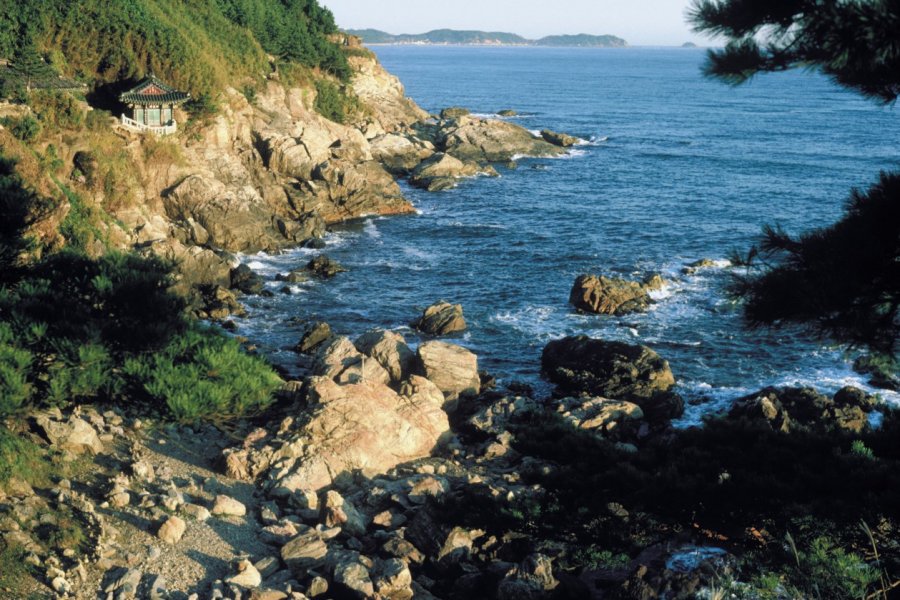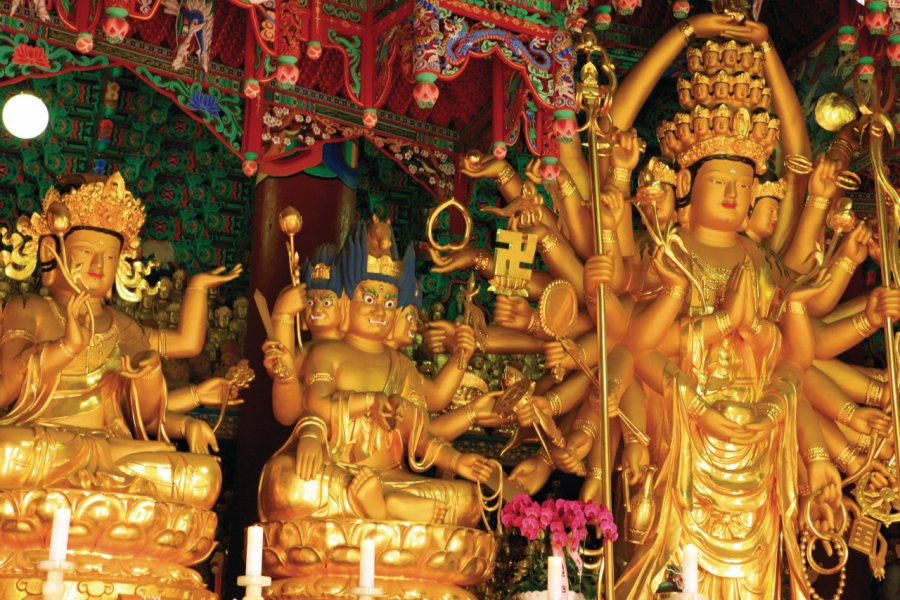Travel Guide Naksansa 낙산사
Find an accommodation
Advertising
Founded by the monk Uisang de Silla in 671, this temple was destroyed during the war and restored from 1953. Partially destroyed again by a fire a few years ago, the renovations were recently completed. The smells here are extraordinary in spring, when the scent of acacia blends with the scent of the sea. From the main entrance on the road, one passes through a door surmounted by a war survivor's pavilion dating from 1465. Going up on the right, you reach the temple. You enter the courtyard lined with pleasant buildings. At the back is the Wonbongbo hall decorated with beautiful paintings and blue-green tiles. The wall which surrounds it is original and would date from the 15th century. It is a beautiful work of cob consolidated with granite logs and curved tiles. A 7-storey stupa also dates from the 15th century, when the temple was rebuilt under the last Buddhist sympathetic king of Joseon, Sejo. A rare bell, cast in 1469, bears Sanskrit characters. If one takes the path behind the bell, one arrives at the huge statue of Haesugwaneum, the goddess of compassion dedicated here to the sea and sailors. This 15 m high granite statue overlooking the sea was built in 1977. Underneath is a strange little meditation hall with a window through which the head of the statue can be seen standing out against the sky. If you wish, you can have lunch there for free (a symbolic donation is always welcome) or participate in the temple stay program.
Suggested addresses Naksansa 낙산사
Weather at the moment
Advertising
Organize your trip with our partners Naksansa 낙산사
Transportation
Book your plane tickets
Car Rental
Boat rental
Accommodation & stays
Find a hotel
Holiday rental
Find your campsite
Tailor-made trip
Immersion travel
Services / On site
Activities & visits
Find a doctor






